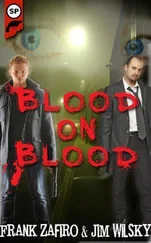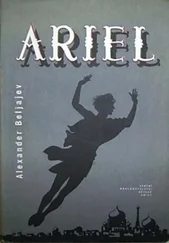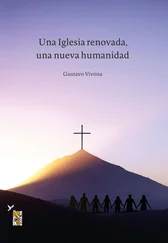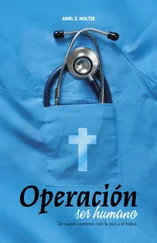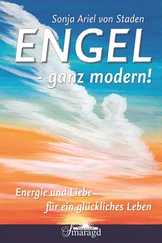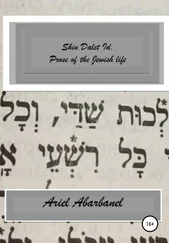Ariel Toaff - Blood Passover
Здесь есть возможность читать онлайн «Ariel Toaff - Blood Passover» весь текст электронной книги совершенно бесплатно (целиком полную версию без сокращений). В некоторых случаях можно слушать аудио, скачать через торрент в формате fb2 и присутствует краткое содержание. Жанр: Религиоведение, на английском языке. Описание произведения, (предисловие) а так же отзывы посетителей доступны на портале библиотеки ЛибКат.
- Название:Blood Passover
- Автор:
- Жанр:
- Год:неизвестен
- ISBN:нет данных
- Рейтинг книги:3 / 5. Голосов: 1
-
Избранное:Добавить в избранное
- Отзывы:
-
Ваша оценка:
- 60
- 1
- 2
- 3
- 4
- 5
Blood Passover: краткое содержание, описание и аннотация
Предлагаем к чтению аннотацию, описание, краткое содержание или предисловие (зависит от того, что написал сам автор книги «Blood Passover»). Если вы не нашли необходимую информацию о книге — напишите в комментариях, мы постараемся отыскать её.
Blood Passover — читать онлайн бесплатно полную книгу (весь текст) целиком
Ниже представлен текст книги, разбитый по страницам. Система сохранения места последней прочитанной страницы, позволяет с удобством читать онлайн бесплатно книгу «Blood Passover», без необходимости каждый раз заново искать на чём Вы остановились. Поставьте закладку, и сможете в любой момент перейти на страницу, на которой закончили чтение.
Интервал:
Закладка:
The number of Jews on the Emperor’s lists of candidates remains unknown. Nor do we know who filed the petitions to inscribe these Jewish candidates, or the methods used, or the reasons for doing so. We only know that many Jewish physicians, of various origins, in addition to Tobias, a resident of Trent, were in Venice during the Emperor’s visit, attracted by an opportunity of obtaining some much sought-after title from Emperor Friedrich in person; nor do we know how many of them had already spent considerable periods of time in the City of the Lagoons in search of fame and fortune [21] In this regard, see D. Nissim's recent publication, Un "minian" di ebrei ashkenaziti a Venezia negli anni 1465-1480 , in "Italia", XIV (2004), pp. 41-47.
. Among them were the Jews Moschè Rapp, Lazzaro [22] On Mose Rapa (Moshe Rapp), whose documentary evidence dates back to 1475, cfr. "Hebraische Bibliographie", VI (1863), footnote p. 67. On Raspe and the other physician "Lazzaro", recorded at Venice in December 1465, see also I. Munz, Die Jüdischen Ärzte im Mittelalter , Frankfurt A.M., 1922.
and the better-known Omobono (Simcha Bunem or Bunim), keeper of the pharmacy " della Vecchia " at San Cassian, with a house at San Stae, only a few steps from the Albergo dei Bresciani (" magister Homobon , Jewish physician, at the Speziaria de la Vechia at San Cassian, with his house near San Stae, not far from the Casa de Bressani, at Venice") [23] On Maestro Omobono and his involvement in the Trent trials, see Divina, Storia del beato Simone da Trento , cit., vol. II, p. 169. For other information relating to him cfr. D. Carpi, L'individuo e la colletività. Saggi di storia degli ebrei a Padova e nel Veneto nell'eta del Rinascimento , Florence, 2002, pp. 221-224. Carpi reports that Leone, son of the "magistri Hominisboni medici ebrei de Veneciis" [“Omobono, the master Jewish doctor from Venice”], in 1471 had had a certain Marco di Salomone Ungar incarcerated at Padua for debt. Omobono lived "appresso la Casa dei Bresciani" and G. Tassini ( Curiosità veneziane , Venice, 1863, pp. 96-97), notes in this regard that "alcuni paesi della Repubblica, come Brescia, godevano il diritto di tenere in Venezia particolare alberghi coll'oggetto di alloggiare i propri nunzi, con l'andare del tempo transformate in communi osterie e taverne" [“a few regions of the Republic, such as Brescia, enjoyed the right to keep private inns in Venice for the purpose of loding their own nuncios, and in time these inns became transformed into ordinary eating houses and taverns”]. For the correspondence of the name Omobono or Bonomo with Simcha Bunem o Bunim among the Ashkenazi Jews, see V. Colorni, Judaica Minora, Saggi sulla storia dell'ebraismo italiano dall'antichita all'età moderna , Milan, 1983, p. 787.
. Accompanying them was the physician Moisè da Rodi, whose presence is attested to with certainty in 1473 [24] Cfr.P.C. Ioly Zorattini, Processi del S. Uffizio contro ebrei e giudaizzanti. I : 1548-1560 , Florence, pp. 339-340.
,but who probably arrived in Venice even earlier, and "Maestro Theodoro (Todros), Jewish physician", who reached Venice in 1469 with Friedrich [25] Cfr. R. Sege, Cristiani novelli e medici ebrei a Venezia: storie di Inquisizione tra Quattro e Cinquecento , in M. Perani, Una manna buona per Mantova . Man tov le-Man Tovah . Studi in onore di Vittore Colorni per il suo 92° compleanno , Florence, 2004, pp. 383-389.
.
The best-known of all, however, was, without doubt, the rabbi and barber surgeon Jehudah messer Leon, certainly a product of Ashkenazi Jewish environment, if his origins at Montecchio in the Vicentino region are indeed a fact [26] In the ample bibliography on Jehudah messer Leon, see, in particular, D. Carpi, Notes on the Life of R. Judah Messer Leon , in E. Toaff, Studi sull'ebraismo italiano in memoria di C. Roth , Rome, 1974, p. 37-62; V. Colorni, Note per la biblografia de alcuni dotti ebrei vissuti a Mantova nel secolo XV , in "Annuario di Studi Ebraici", I, (1935), pp. 169-182; M. Luzzati, Dottorati in medicina conferiti a Firenze nel 1472 da Judah Messer Leon da Montecchio a Bonaventura da Terracina e ad Abramo da Montalcino , in Medicina e salute nelle Marche dal Rinascimento all'età napoleonica , in "Atti e memorie", XCVII (1992), pp. 41-53. The hypothesis that Jehudah messer Leon was a native of Montecchio Maggiore in the Vicentino is advanced by I. Rabbinowitz, The Book of the Honeycomb's Flow by Judah Messer Leon, Ithaca (N.Y.)-London, 1983, p. XX, and recently made by H. Tirosh-Rotschild, Between Worlds. The Life and Thought of R. David b. Judah Messer Leon , Albany (N.Y.), 1991, p. 25, and by G. Busi, Il succo dei favi. Studi sull'umanesimo ebraico , Bologna, 1992, p. 19.
. This same Leon, who resided in Venice starting in 1469 at the earliest, where his son David was born, was officially granted his degree in medicine p. 20]
during the Emperor’s visit, although formally the diploma was only signed a few days later by the imperial notary at Pordenone (but still in the month of February) [27] The text of the imperial diploma granted to Jehudah messer Leon, dated 21 February 1469, and published in full by Carpi, Notes on the Life of R . Judah Messer Leon , cit., pp. 59-60.
. Similarly, years later, in August of 1489, the Emperor, still at Pordenone, is said to have granted a doctorate in medicine to two Jewish candidates, both of them from Sicily and belonging to the Azeni family at Palermo, David di Aronne and Salomone di Mosè [28] The imperial privileges granted to the two Jewish Sicilian physicians, dated 4 August 1489, the their text, has been published by Wenninger ( Zur Promotion jüdischer Ärtzte , cit., pp. 413-424). Salomone Azeni was almost certainly identical with Salomone Siciliano, active at Padua in the last decade of the Fifteenth Century (cfr. Carpi, L'Individuo e la collettività , cit., pp. 222, 224).
.
The petitions of the Jews to the Emperor, who had always been highly esteemed for his benevolent attitude, filed during his stay in Venice during the winter of 1469, were submitted by an ambassador admitted to Friedrich’s presence for that particular occasion. The occasion was described as follows, early in the 16th Century, with some satisfaction although with undoubted exaggeration, by the chronicler Elia Capsalia, rabbi of Candia, who had studied medicine at the Talmudic academy of Padua:
"The Emperor (Friedrich III) was very favorable to the Jews. During his visit to Venice (in 1469), when his vassals and subjects presented him with (gastronomic) gifts, he never refused to eat them before his servants and functionaries had tasted them first, as is the custom among emperors. Whenever the Jews brought him gifts of this kind, Friedrich never hesitated to eat any of the dishes immediately, saying that he had complete faith in the loyalty and honesty of his Jewish subjects.
"Later, Frederic, traveling from Venice, went to Padua to gain an impression of that city. On that occasion, the Serenissima prepared a carriage for him and placed it on the city walls: the horses pulled the carriage from which the Emperor admired the entire city. This was done so that he might easily verify the thickness and solidity of the walls (of Padua). Friedrich signed a pact with Venice and remained its faithful ally for the entire time he lived" [29] E. Capsali, Seder Eliyahu Zuta , by A. Schmuelevitz, Sh. Simonsohn and M. Benayahu, Jerusalem, 1977, vol. II, p. 260. On this matter, cfr Nissim, Un "minian" di ebrei ashkenaziti a Venezia , cit., pp. 42-43. On Capsali's work, see, recently, G. Corazzol, Sulla Cronaca dei Sovrani di Venezia ("Divre' hayamim le-malke' Wenesty'ah") di Rabbi Elia Capsali da Candia , in "Studi Veneziani", XLVII (2004), pp. 313- 330.
.
Интервал:
Закладка:
Похожие книги на «Blood Passover»
Представляем Вашему вниманию похожие книги на «Blood Passover» списком для выбора. Мы отобрали схожую по названию и смыслу литературу в надежде предоставить читателям больше вариантов отыскать новые, интересные, ещё непрочитанные произведения.
Обсуждение, отзывы о книге «Blood Passover» и просто собственные мнения читателей. Оставьте ваши комментарии, напишите, что Вы думаете о произведении, его смысле или главных героях. Укажите что конкретно понравилось, а что нет, и почему Вы так считаете.


